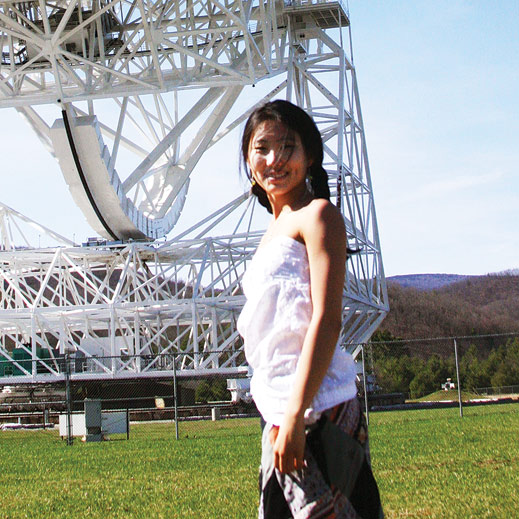Ask what a scientist’s job is and the answer might be that it’s to run a lab, to write grants, or even—if the scientist is feeling cheerful—to uncover knowledge. Ask a journalist the same question and you’ll probably hear delivering news, generating awareness, or, most cynically, selling papers.

Whose job is it to tell the story of science—to act as its representative in the public and policy spheres? You might think science journalists are the ambassadors. In the summer of 2010, I was one. I’m here to tell you: they’re not.
After finishing my bachelor’s in physics at MIT, I became an AAAS Mass Media Fellow at a newspaper in California. I arrived in early summer—as black oil was pouring out of the Macondo well in the Gulf of Mexico following the Deepwater Horizon explosion. Although the around-the-clock news coverage of the oil spill had abated somewhat, opinions abounded, and a local university professor became entangled in a public debate about whether oiled birds could be saved.
The professor, a wildlife expert who had devoted most of his life to rescue and recovery of oiled animals, believed rescue efforts should continue. But his opponents said they did no good.
In researching the story, I combed existing news. I found that a typical article on this subject began by informing me that there was no consensus. Then I got fed some quotes: Scientist A said no, while Scientist B said yes. Somehow both sides had studies that seemed to support them, yet none of it got me any closer to understanding the truth. How, I wondered, can rational people disagree about facts?
The story took me a week to write. The first time I called the professor, he pointed me to studies, regurgitated the same old points, and even had some colorful language for the other scientists. But a few days later, when I got him on the phone again to say what I’d learned about why the studies disagreed, he listened: I pointed out the different species of birds the different researchers sampled, the decades that separated them, their disparate methods of measurement, and more. After a pause, he said that yes, the rescued birds used to die—no matter what you did to help them—within a few days or weeks. Sometimes they would all die.
I learned that survival depended on a bird’s species, size, and habits; how much oil it had ingested; whether its home was destroyed. I learned that in recent years the scientist’s university had poured millions into improving rescue methods, and there was evidence that this effort had paid off in decreased mortality rates.
Now he had to defend his work, he said, as he feared a public outcry would spell the end of yet another thing that did good in the world. When I called the other scientists with what I’d learned, they agreed. It was not their intention to halt these efforts, they said; they had simply felt that the effectiveness of the programs had been misrepresented in the media.
Looking back, I understood why the scientists on both sides had exaggerated, bent the truth a little. They had come to regard the media with suspicion, as a threat to the viability of their research programs. I also understood why journalists were happy to fan the flames of controversy. There was immense public interest. But as I watched polarized readers hurl words like “heartless” and “wasteful” at each other in the comments, I realized that no understanding had been passed on.
That summer I learned that language matters. I learned that context matters, that a truthful narrative supported by facts is compelling on its own. And I learned that our inability to tell the story of science—of its goodness, its vision, its relentless truth-seeking—is eroding the public’s trust.
Science is not quick or glamorous, and we don’t need to make it look that way. It’s the piecemeal assembly of reality, fact by painstaking fact, and that is beautiful enough. Every time the incremental is reported as revolutionary, a disservice is done. To sensationalize scientific progress is to misrepresent it.
I think good judgment, and the will to exercise it, is the best quality a science writer can have. Because in a disagreement, I can trust such a writer to stand not squarely in the middle but as near as possible to the truth. And in science, there are no two versions of it.
Lulu Liu ’09 is a second-year PhD student in applied physics at Harvard.
Keep Reading
Most Popular
Large language models can do jaw-dropping things. But nobody knows exactly why.
And that's a problem. Figuring it out is one of the biggest scientific puzzles of our time and a crucial step towards controlling more powerful future models.
How scientists traced a mysterious covid case back to six toilets
When wastewater surveillance turns into a hunt for a single infected individual, the ethics get tricky.
The problem with plug-in hybrids? Their drivers.
Plug-in hybrids are often sold as a transition to EVs, but new data from Europe shows we’re still underestimating the emissions they produce.
Stay connected
Get the latest updates from
MIT Technology Review
Discover special offers, top stories, upcoming events, and more.